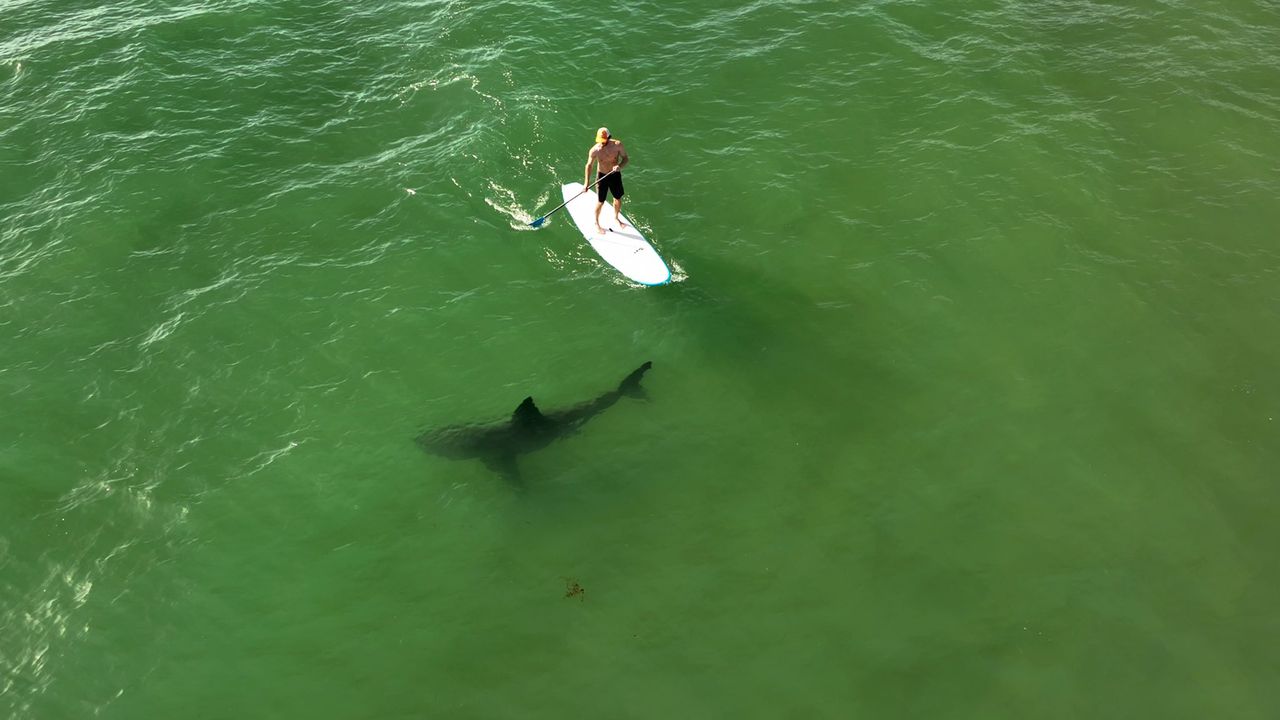Sharks and people can peacefully coexist? Study says they can
Boaters and swimmers off Orange Beach’s Bird Island were startled last weekend when a shiver of hammerhead sharks swam in near shore.
Drone footage posted by Meredith Perry shows swimmers leaping out of the water and into their boats as the sharks circled around inside the area where the boats were anchored.
The incident was just the latest in a series of close encounters with sharks for local beachgoers.
Earlier in June, dozens of sharks — believed to be blacktips — were again spotted in drone footage, in that case off of Alabama Point in Orange Beach. Also in June, video showed a shark caught and dragged onto the beach in Panama City, Fla. And, in March, a juvenile Great White shark was caught by fishermen shore fishing in Orange Beach.
A recent study by researchers at California State University in Long Beach, however, suggests close encounters between sharks and humans are more frequent than people realize and that the two apex predators can peacefully coexist.
The university’s Shark Lab was founded in 1966 to study the sensory biology and behavior of sharks. Today, the lab studies the physiological and behavioral ecology of marine animals, emphasizing the effect of human activity on the ocean.
The Shark Lab’s recent study surveyed 26 different southern California beaches over a two-year period between January 2019 and March 2021, using more than 1,600 drone flights to track the movements of juvenile white sharks and how often they interact with humans.
In the more than 700 hours of footage amassed, researchers found where the sharks most often grouped together, they swam near humans 97% of the days surveyed and often within 50 yards of wave breaks, near surfers and stand-up paddleboarders — with the humans largely unaware. There wasn’t a single report of a shark bite in any of those locations.
“Most of the time water users didn’t even know the sharks were there, but we could easily see them from the air,” said Patrick Rex, a Cal State Long Beach graduate student who led the study. Rex said sharks were found coming within 10 feet of humans on a daily basis.
Chris Lowe has been the director of the Shark Lab since 1998. Lowe says researchers expected to find that humans and sharks can coexist peacefully, but were surprised at how often those encounters occurred, saying “we never expected to see so many encounters every day with no incidents” of shark bites.
“It’s not just about sharks, it’s about people,” Lowe said. “This study may change people’s perception of the risk sharks pose to people that share the ocean with them.”
Lowe’s comments echo those of Sean Powers, head of the University of South Alabama’s School of Marine & Environmental Sciences. Lowe told AL.com earlier this month that sharks feed on other marine life and have little interest in humans.
“Humans don’t taste very good to a shark,” Lowe said. “They’re expecting a rich, fatty fish.”
If the Shark Lab’s findings don’t put Alabama beachgoers at ease, perhaps it’s worth a reminder that there have only been 10 reported shark attacks in Alabama waters since 1837.
The Associated Press contributed to this report.
